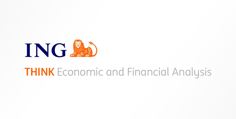The ramifications of a global trade war are broadly negative for emerging and commodity-linked currencies. Liquid reserve currencies backed by large surpluses are likely to outperform. And we are now starting to see some independent dollar weakness coming through as a risk premium is demanded of US assets
Picking Out the Dominant Themes
The clear takeaway from recent events is that global growth will be lower. First and foremost, this is a shock to emerging currencies. In effect, recent events reverse the emerging market boom witnessed in the 2000s after China entered the WTO in 2001.
Second, it looks as though outside of the US, the Rest of the World will be more worried by disinflationary trends, and interest rates will be coming lower. The baggage of ‘exceptionally’ high interest rates in the likes of the US, UK, Norway and Australia are now a liability to local currencies as deeper easing cycles are priced.
And for the immediate quarter ahead, defensive currencies should continue to perform well if US markets continue to lead global equities lower. A defensive currency needs properties of not only good liquidity but also the backing of a large current account surplus or net investment surplus if the dominant fear is one of a global repatriation of funds.
The Japanese yen and Swiss franc score strongly here, but the 4% US current account deficit now discounts the US dollar from the safe-haven trade – unless that is, we have a dollar funding crisis.
EUR/USD: Building the Baseline
Immediately after ‘reciprocal’ tariffs were announced, and intermittently since, there have been periods when the dollar was sold across the board on the emerging ‘sell America’ narrative.
The case is certainly building for medium to long-term investors to be raising their FX hedge ratios on US investments. We can see this in the FX options market, where the one-year EUR/USD risk reversal skew – typically the domain of corporates – has recently switched to show a substantial demand for euro calls over euro puts.
And in terms of positioning, Chicago futures data suggest there is room for asset managers to increase their net euro long positions even if the more speculative leverage fund community is reasonably long on euros already.
Equally, we suspect the currency preferences of FX reserve managers will come under scrutiny this year – especially if we hear more about this Mar-a-Lago accord. There is a real possibility we will see a meaningful reduction in the dollar shares in their portfolios. And away from gold, the liquidity of its bond markets makes the euro a likely choice if dollar holdings are to be cut.
But looking at the macro, the dominant factors for EUR/USD this year should be: the end of US exceptionalism, the Fed versus ECB easing dynamic and lower energy prices. All of these look mildly positive for EUR/USD now.
In terms of a quarterly profile, and because the second quarter should be a difficult one for risk assets, we have EUR/USD trading towards the top-end of a 1.10-1.15 range by the end of June. Rate spreads do not justify such a high level, but we are thinking that some of the most extreme measures of risk premium – occasionally worth 5-6% in EUR/USD – can continue to dominate in the second quarter.
While EUR/USD could correct lower if conditions settle later in the year, those forces should be offset by a Fed ready to start easing in the third quarter. We, therefore, think EUR/USD could be holding those gains by year-end. It could also trade into a 1.15-1.20 range, particularly in the latter half of 2026, as fiscal stimulus starts to support eurozone growth and the ECB prepares to hike by the end of the year.
Disclaimer: This publication has been prepared by ING solely for information purposes irrespective of a particular user’s means, financial situation or investment objectives. The information does not constitute investment recommendation, and nor is it investment, legal or tax advice or an offer or solicitation to purchase or sell any financial instrument. Read more
